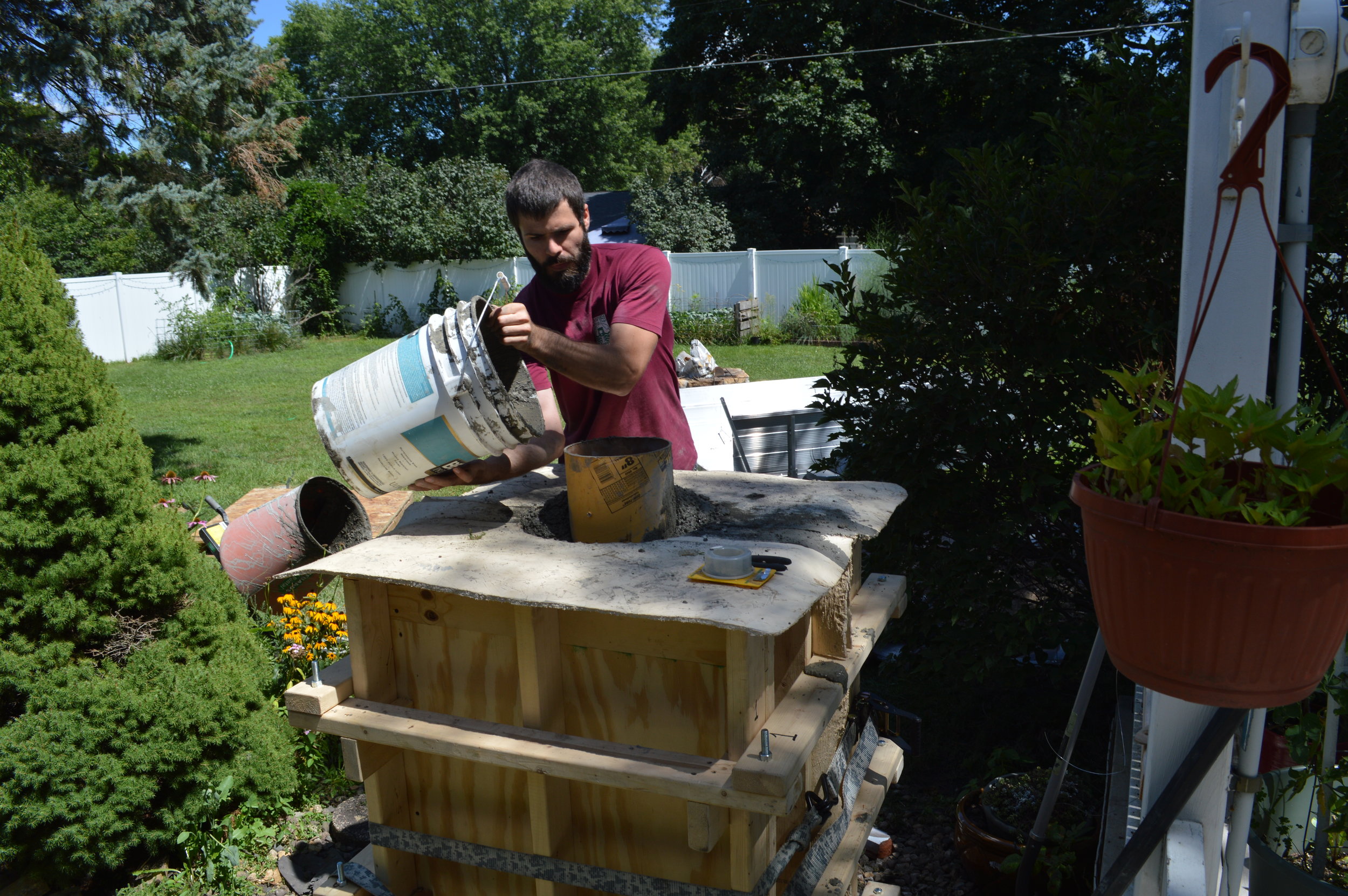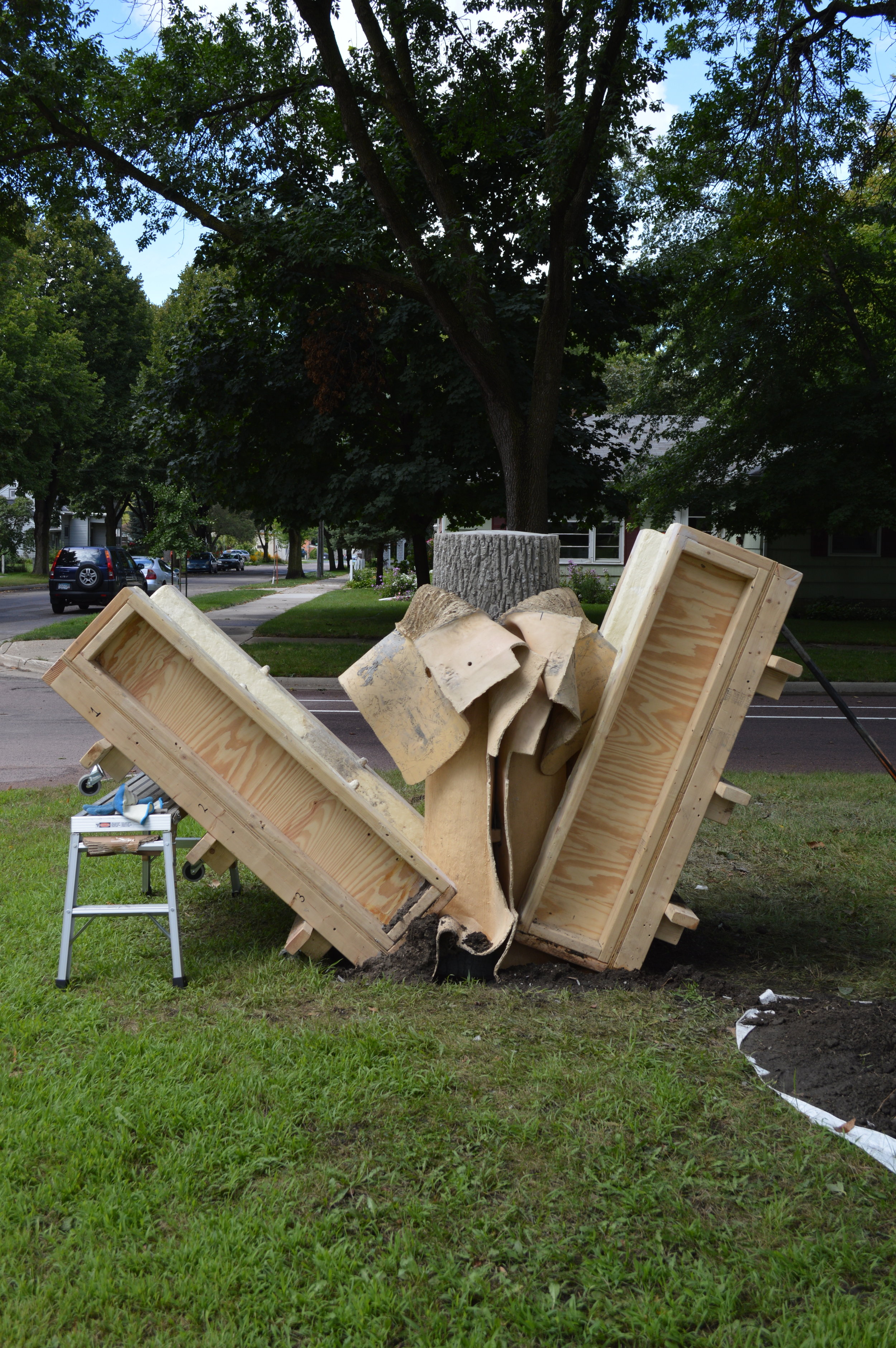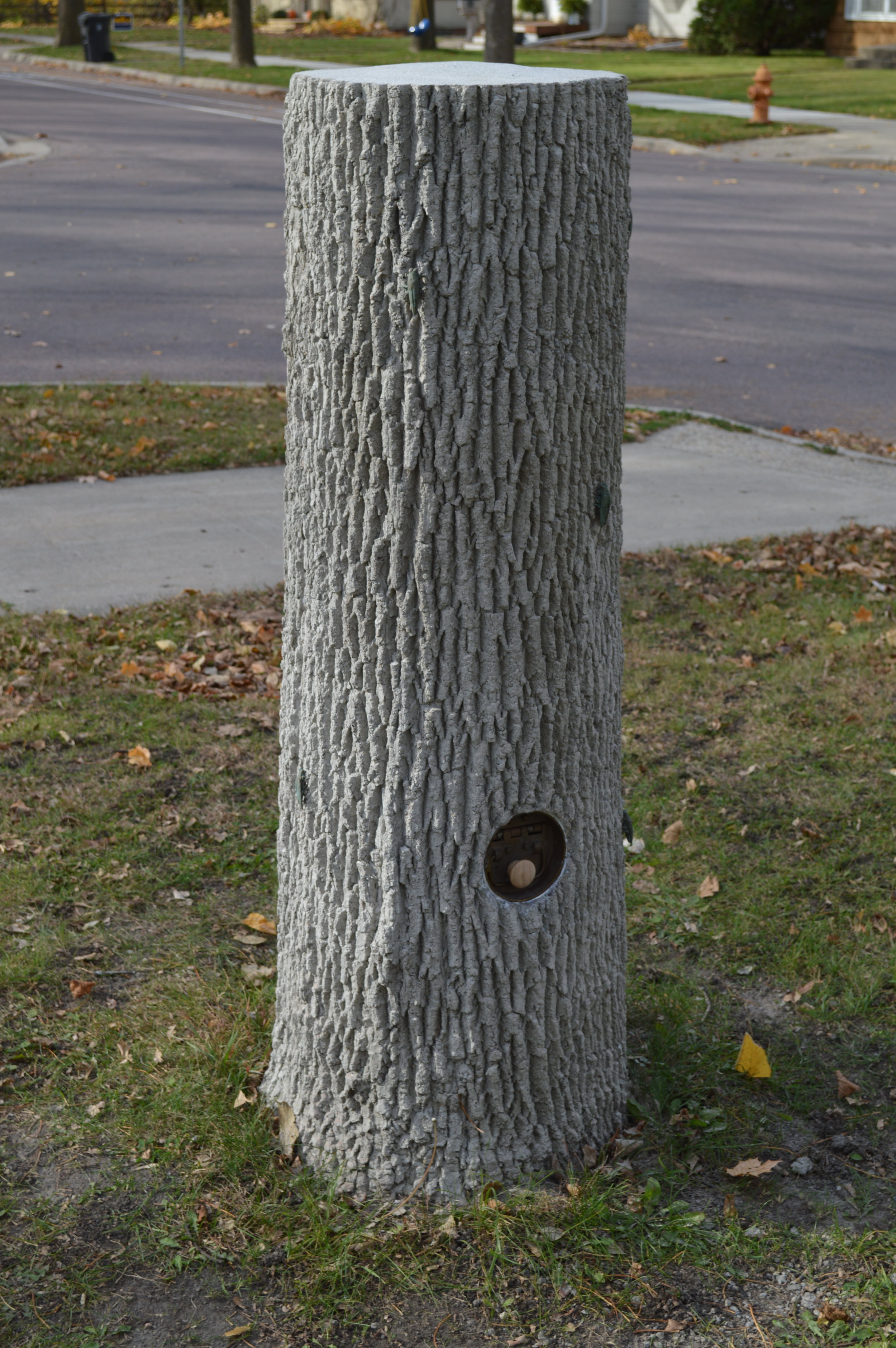Stop EAB. Sculpture in Rochester, MN at Soldier's Field Memorial Park
The EAB PROJECT
Native to Asia, the Emerald Ash Borer was first found near Detroit in 2002. This exotic bark beetle arrived to the U.S. in the packing material of cargo ships. Since its arrival, it has killed hundreds of millions of ash trees throughout the Midwest and East.
The larvae feed on the inner bark of the tree. This inhibits the tree from carrying water and nutrients to its living foliage. The adult beetles exit the trees in the spring and fly to new specimens to lay their eggs and repeat the cycle. Humans transporting firewood are the most common means for the spread.
In 2008 it arrived to Minnesota. Minnesota, has some 900 million ash trees, more than any other state. As of 2016, the beetle has only been documented in the Twin Cities and Rochester areas of Minnesota. The city of Rochester is making an effort to treat many of their ash trees on public land. Minneapolis Parks and Recreation Forestry Department, in a proactive effort to combat the problem, is systematically removing all ash trees, infected and healthy, from the urban canopy. Both municipalities are working with the Department of Agriculture and the DNR to prevent the spread and further infestation of the emerald ash borer (EAB) to other parts of the state. The Twin Cities’ ash logs are being ground into burnable mulch, and some are sold for wood use products.
Plans and Tests
As part of a State Arts Board Grant, MPRB provided the lower portion of a 35-year old white ash tree that was cut down by the city. A company that specializes in tree castings for natural history museums created a reusable mold from the log.
After a test sculpture in my backyard, I constructed a sculpture on the 7100 block of Broad Street Boulevard in Mankato, MN, and then in Soldiers Field Memorial Park in Rochester, MN. The sculptures stand approximately 20in wide, by 5 feet tall. The furrowed bark characteristic of the ash tree is captured in the dense industrial material of poured concrete. The truncated trees may be reminiscent of a totem or provide an effigy to a lost tree. The form may also reference the folk art roadside sculptures that celebrate community individuality and culture throughout Minnesota. Bronze EABs are placed about the trunk to symbolize the spring departure of the adult beetles from their host trees to new specimens on which to lay their eggs.
The Mankato Sculpture
In the early 70s, each block of Broad Street Boulevard was a canopy of elms trees. This grassy median was a community gathering place, and in the winter, the elms trees were heavily lit with holiday lights. The city went so far as to run power through this median to facilitate resident-decorating of the boulevard in what was then called the “festival of lights.”
In the late 70s Dutch elm disease came through the area and all the trees were removed. Rather than replanting the boulevard with a diverse mix of hardwoods, the city planted each block entirely in one species. The 7100 block, the last block of the boulevard, was planted exclusively in ash.
The Mankato sculpture will stand below this canopy of living ash, all of which are around 40 years old. Fortunately, the EAB has not yet been found in Mankato. The Mankato sculpture is meant to promote awareness and to help prevent the spread of infested wood to this area. If the beetle does reach Mankato, the sculpture may become an effigy to the lost trees.
The Rochester Sculpture
The Rochester sculpture replaces an ash tree that was removed from an EAB infestation at Soldiers Field Memorial Park in downtown Rochester. While the park is a veterans memorial, in the center of the park is a walking/running track. The perimeter of this track is lined with exclusively 50-60 year old ash trees. In this location, the sculpture memorializes the ash trees that have been lost in the area.
Bronze beetles / Mailbox
Prints
600+ Hand-printed postcards facilitated the spread of information on EAB in MN. These 3-color letterpress prints are illustrated with dead beetles on the front, and on the back, there is EAB info with helpful links. One version served as an invite for public receptions in Mankato and Rochester. Another version is tucked into the subtle brass cylinder box housed in each sculpture. As passersby examine the sculpture, they will find the bronze beetles, then the cardbox. They will take these tactile objects home with them and hopefully reflect on the problem.
The cards were printed at the Children's Museum of Southern Minnesota in Mankato. Printing during crowded weekend business hours, museum guests observed the printing process and learned details about the project. The printing press is a historic 12x18 Kluge that was once used for printing purposes at the Mankato Free Press.
EAB IN Gary Indiana
In Memoriam, EAB sculpture in Marquette Park. Gary Indiana.
In June of 2017, I enjoyed 2 weeks as the Artist in Residence at the Calumet Artist Residency in Gary, IN. One of the highlights of this residency was a new iteration of the EAB sculpture. With close proximity to Detroit (the point of entry for the EAB in the US) the ash trees of Northwest Indiana were an early target for infestation. The Gary sculpture is meant to be a memorial for the lost trees of this area, but also to promote awareness about other native / invasive plants and pests in this fragile national lakeshore ecosystem. The Sculpture is located in Marquette Park, a public park that connects the national park's black oak savanna & the lagoons of the calumet river to a a popular public beach that looks out to the vastness of Lake Michigan. The sculpture will be a feature of a new native-plant educational garden in the park. Unlike the Minnesota sculptures, this iteration doubles as a planter spouting native species from the trunk of the memorialized concrete ash. In my experience, Gary has a wealth of passionate people working hard for positive change. With this sculpture, there is an element of rebirth or growth from decay, that reflects the optimism of the natural world and the people of Gary.
Follow this link to more information about the Calumet Artist Residency: http://www.calumetresidency.com/
Thanks!
Big THANK YOU's go out to the Minnesota State Arts Board, the City of Mankato, Twin Rivers Council for the Arts, the Children's Museum of Southern Minnesota, the Tourtellote Park Neighborhood Association, the Greater Rochester Arts and Cultural Trust, Rochester Parks and Recreation, Acorn Exhibits, The Calumet Artist Residency, and Yousif del Valle for supporting this work.






































